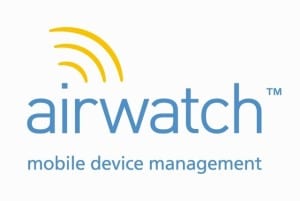Bring Your Own Device (BYOD) policies continue to be a top choice in the workplace due to the flexibility and ease of use they afford end users. Indeed, a recent AirWatch survey found 50 percent of organizations now offer a BYOD program.
FREE GIFT: Best Practices For A Productive BYOD Program
While employees may enjoy the convenience of one phone for corporate and personal purposes, BYOD can be a major headache for IT, however. With operating system (OS) updates every 15 days and new phones still coming into the market (such as the Amazon Fire phone), BYOD is a complex, ever changing challenge for IT managers. Nonetheless, the end result is well worth the effort, as the same survey found that that the main motivating factors for implementing a BYOD program include cutting costs (about 35 percent%), boosting productivity and enhancing security (both about 15 percent).
Since BYOD has become an inevitable part of many organizations’ enterprise mobility strategies, I have compiled five tips to help companies successfully implement a BYOD strategy.
1) Position BYOD as a Perk. BYOD offers employees the choice to work how they want, on the devices they choose (or the ones they already have). To both the employee’s and employer’s benefit, these devices are likely to be customized with apps and productivity tools that users have already identified as helpful. Playing up the flexibility and choice BYOD offers will help enable the program to be perceived as one that enables employees to do their jobs more productively and more efficiently.
2) Prepare for the Influx (in terms of both network architecture and management). IT personnel must ensure their network architecture can handle growth of Wi-Fi traffic. They must also ensure their existing device management platform can accommodate the management of employee devices. If IT has already invested in an EMM system, they should ideally be able to leverage existing policies that have been developed for corporate devices, extending the necessary policies, apps and content from the same console.
3) Find a Solution that Can Keep Up with the Market. As I mentioned, mobile operating system updates are released every 15 days on average, and new devices are introduced frequently. Each new device type or OS update is a chance for a security vulnerability to arise. Find an OEM-agnostic provider that can provide same-day support for all major device types and operating systems.
4) Establish Clear BYOD Policies and Terms of Use. BYOD policies can help employees opt in by outlining both the risks unauthorized access pose and the benefits BYOD programs provide. The BYOD policy should clearly define the rules of the program in accordance with government regulations and company security policies. It should also clearly outline what IT will be able to see and manage on personal devices so there is no fear of personal data being compromised or exposed. Before releasing the program organization-wide, IT departments should get executive-level buy-in and input from a variety of departments to ensure all concerns are heard and all needs are met. Privacy is a major concern for many employees and may be a hindrance to enrolling in BYOD programs. A recommend Terms of Use could keep GPS location, personal user information and telecom data private while protecting the device from a full device wipe or remote control.
5) Offer Assistance. With BYOD, IT departments take on a new role as a consultant. The influx of personal mobile devices into corporate networks – and the cloud-hosted data they access – has fundamentally changed the way people work and, by extension, the way IT departments operate. Providing access to multiple device types – and often to multiple devices per user – creates a myriad of new challenges for IT departments. IT departments managing BYOD programs are also routinely asked to troubleshoot on a much wider range of devices. Be sure your department is prepared for the influx and diversity of requests from the users.
While all BYOD programs require patience and flexibility, I hope the above tips help organizations as they embark on the BYOD journey. To learn more about AirWatch BYOD, please visit http://www.air-watch.com/solutions/bring-your-own-device-byod. To learn more about our containerization solution for BYOD, please visit http://www.air-watch.com/solutions/containerization.
By Blake Brannon, Lead Solutions Engineer, AirWatch by VMware
About AirWatch
 AirWatch is the leader in enterprise-grade Mobile Device Management, Mobile Application Management and Mobile Content Management solutions designed to simplify mobility. More than 7,000 customers across the world trust AirWatch to manage their most valuable assets: their mobile devices, including the apps and content on those devices. Our solutions are comprehensive, built on a powerful yet easy to use platform by leaders in the mobile space.
AirWatch is the leader in enterprise-grade Mobile Device Management, Mobile Application Management and Mobile Content Management solutions designed to simplify mobility. More than 7,000 customers across the world trust AirWatch to manage their most valuable assets: their mobile devices, including the apps and content on those devices. Our solutions are comprehensive, built on a powerful yet easy to use platform by leaders in the mobile space.






